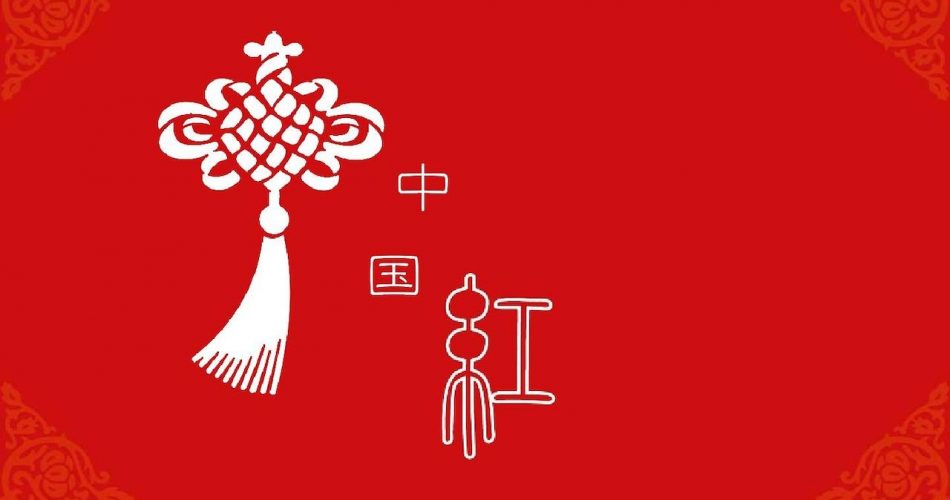Table of Contents
- Part One: Why do Chinese Like Red?
- #1: The Love of Red Because of a Primitive Worship of the Sun, Fire and Blood;
- #2: The Madness of the Zhou Dynasty: The First Peak of the Red Cult
- #3: About the Worship for Red after Zhou Dynasty
- #4: In the Tang and Song Dynasties, Red was Used by Common Households
- Part Two: Which Kind of Red can be Deemed as “the Red of China”?
- Part Three: Why Do Chinese Avoid White
- Summary:
Part One: Why do Chinese Like Red?
When it comes to Chinese New Year, red is widely used in China. Firecrackers, spring scrolls, lanterns, clothes and red envelopes are all in red. When you turn on the TV, you can see that the hosts are in red. Especially, CCTV’s Spring Festival Gala seems to take the mission to spread “Chinese red” to people worldwide.
Not only the Chinese New Year, red is also very commonly used in the daily life of Chinese people, such as wearing red underwear and pants for the Chinese New Year, wearing lipstick for make-up, and many red billboards and neon signs on the street.
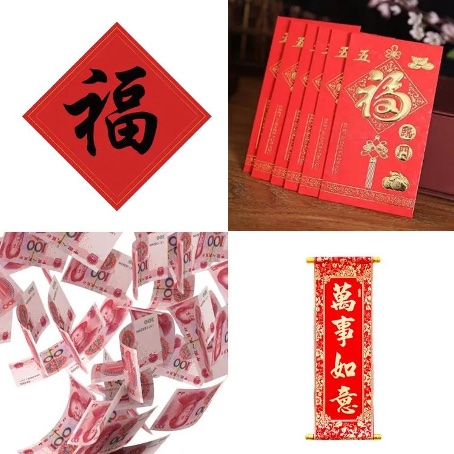
In China, people talk about “red” every day, even including Chinese Ren Min Bi (Chinese Yuan).
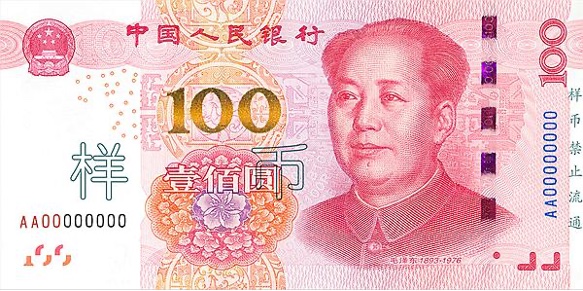
Red is not only one of the favorite colors of Chinese but also the color that the whole world recognizes as the representative color of China. The World Trade Center in New York, the Tokyo Tower and the Burj Khalifa in Dubai have all been illuminated in red to celebrate the Chinese New Year.
So, why are the Chinese so obsessed with red? What does red really mean to the Chinese people?
#1: The Love of Red Because of a Primitive Worship of the Sun, Fire and Blood;
In fact, the Chinese love of red has been around since ancient times.
a. The Worship for the Sun
Imagine that a group of primitive people who have just evolved from monkeys with clothes to wear and no food to eat, were forced by wolves and tigers, and birds and animals from all directions. The sun, round and bright, sacred wolves and tigers away, leaving only human beings.
No matter how strong the storm is, no matter how terrible the thunder and lightning are, as long as there is sun, the world is peaceful and tranquil.
According to Humble opinions of reading notes from Huai Nan Zi·Tian Wen Xun, “The day is virtue, the month is punishment, the month returns and all things die, and the day comes and all things live.” It can be indicated that the sun represents life.
The sun was worshipped by the ancient people, so the red color, symbolizing the sun, was favored.
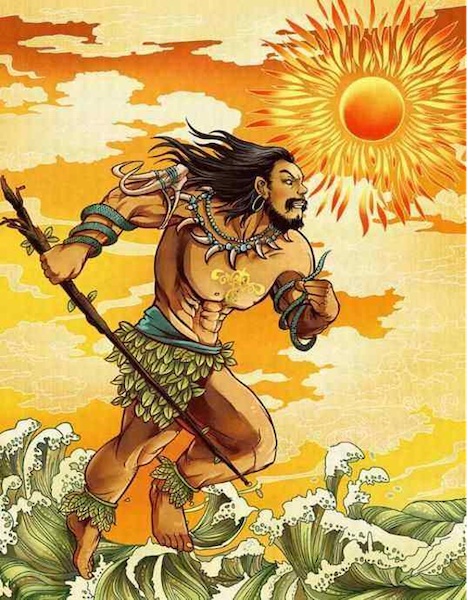
The Chinese myth of “Kwafu Chasing the Sun” is an expression of the ancestors’ love for the sun. In the Chinese myth of “Kwafu Chasing the Sun”, after nine days and nine nights of furious running, at the place where the sun sets, Kwaito finally catches up with the sun and opens his arms to hold up the sun. But the sun was so hot that Kwafu felt thirsty and tired. Eventually, he died of thirst and was turned into a peach forest.
b. The Worship for Fire
But the night is still terrifying because there is no sun and wild animals still come and attack human beings. That’s when the fire emerged.
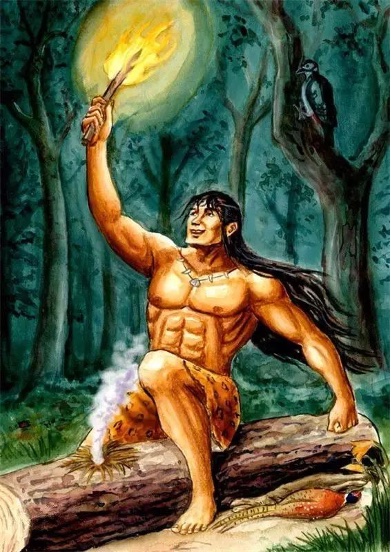
In those days, for people, fire and the sun seemed to have similar powers – to scare off wild animals, to illuminate for warmth. Both of them were powerful enough to kill people.
Also, fire worked to cook raw food and the sun helped fruit grow, so ancestors saw the sun and fire as one family and even the same god.
Hence, Suiren, who drilled wood to make fire, was in turn worshipped as the Emperor of Yan and was able to take on the form of a sunbird.

There is no doubt that fire and the red color of the rising sun were also worshipped as gods.
c. The Worship for blood
Apart from the worship for the sun and fire, the ancestors also showed a deep reverence and worship for blood.
The primitive people felt that blood represented life because there was too much leading in people’s fighting against wild animals.
As blood is red, ancient people sprinkled red hematite powder around the dead, believing that this would invoke new life for the dead.

Since the rising sun, fire and blood are all red, the ancestors’ awe of supernatural power and life has been transformed into the worship of red, believing that red has powerful power and new hope to ward off evil and promote good luck.
Because there was no effective way to deal with wild animals, birth, aging, illness and death, people’s awe continued be passed down to the Zhou Dynasty.
#2: The Madness of the Zhou Dynasty: The First Peak of the Red Cult
In ancient China, it was the Zhou Dynasty that delivered the peak of the red worship. During the Zhou Dynasty, people’s worship of red can be described as “crazy”.
In ancient times, people extracted the color of dyes from nature. Ancient people extracted the red color from red plants and minerals such as madder, safflower, cinnabar and hematite. These things were highly available in people’s daily life. Therefore, it was relatively easy for people to obtain red dye.
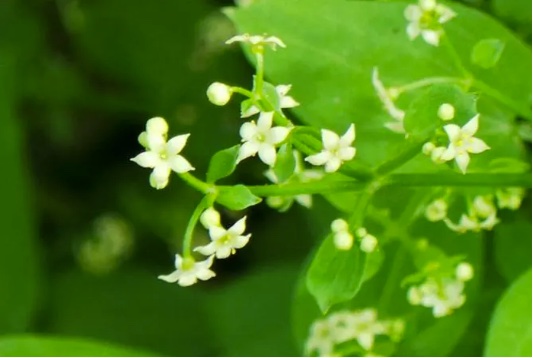
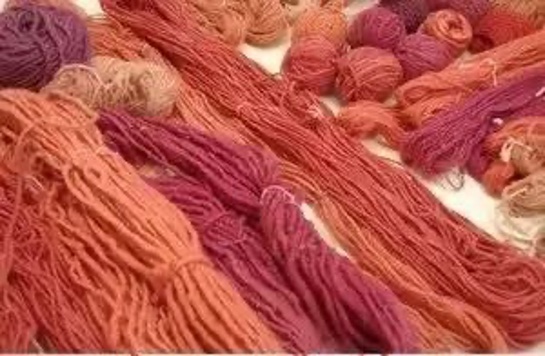
It is also because red was easily extracted from nature, so in the Zhou Dynasty, people would dye many things red, such as murals.

Of course, this is not enough to show that the people of the Zhou Dynasty were crazy about red.
So, to what extent did the people of the Zhou Dynasty become enthusiastic about red?
During this time, the funerals were carried out at sunrise in the morning and the sky was full of red clouds. Red horses were used for fighting, and even the cattle and horses for sacrificing ancestors were red.
Book of Rites, Tan Gong has recorded it that “The people of the Zhou Dynasty are still in the red, and the major events happen on sunrise; the military affairs happen with the sun.”
The emperor of the Zhou Dynasty also wore red trousers and shoes for his crown, and even the floor of the palace of the Zhou Dynasty was painted red, which was called Dandi.
A red bird called Chiwu was the representative of good luck. People in Zhou dynasty thought it as a divine bird in the sun, with supreme power, which could ward off evil spirits and eliminate disasters. People also described it in silk paintings.
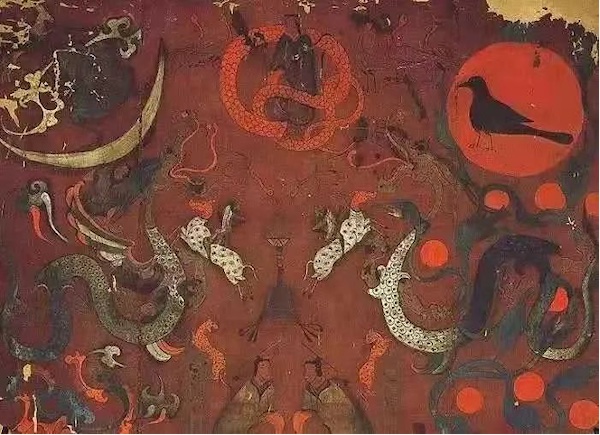
In the minds of the Zhou dynasty, red could not only ward off evil spirits, but also convey auspicious and festival sense. Therefore, people at that time were crazy about red.
#3: About the Worship for Red after Zhou Dynasty
Although the enthusiasm for red in the Zhou dynasty bordered on madness, there were, however, some periods of time when some dynasties held red in less esteem and promoted other colours, such as black. What were the reasons for the fact that some dynasties, like the Zhou dynasty, chose to promote the color of red.
This is because that in the Zhou Dynasty, a very powerful book, the Book of Changes, appeared, and there is a very important concept in this book: “Yin” and “Yang” and “Five Elements” (metal, wood, water, fire, and earth).

In Book of Changes, everything in the universe is divided into two categories, “yin” and “yang”, which evolve according to the laws of gold, wood, water, fire and earth.
During the Spring and Autumn and the Warring States Period and the Qin and Han Dynasties, the five elements of “yin” and “yang” were matched with the five virtues, represented by five colors: gold as white, wood as green, water as black, fire as red and earth as yellow. Each dynasty has a corresponding color in line with the principle of “mutual generation and restriction”.
The effects of “The Five Elements of ‘Yin’ and ‘Yang’” have exerted so great effects on people that people were convinced of these principles. The founding emperor of an dynasty met with his ministers to discuss and determine the five virtues and colors of the dynasty, based on the relationship between the five elements and the way in which power was acquired (by peace or force).

For instance, the Qin dynasty adored black rather than red. Black was said to be the color of the emperor, and even the emperor’s dragon robe was in black.
When it comes to Zhou dynasty, Eastern Han dynasty, Tang dynasty, Wu Zhou period, Song dynasty and Ming dynasty, the virtue lied in fire.
Therefore, emperors of these dynasties deemed red as the color of the whole nation. Undoubtedly, red was highly honored in these dynasties.
However, apart from some dynasties with a nature in worshipping fire (red), there were other dynasties thought highly of red. Why did this happen?
There are two main reasons for the worship of red.
For one thing, because of the strong promotion of the color red in the Zhou dynasty, the color of red was given a very auspicious connotation.
For another thing, Confucius enhanced the status of colors among all the colors.
It is well known that Confucius was the founder of the Confucian school of thought, and that Confucianism has been the “the Theory of Great Unification” of Chinese emperors to rule people since the Western Han Dynasty. Later, Confucianism has become the dominant ideology of traditional Chinese culture. As such, the influence of Confucianism on people cannot be overstated.
Confucius held the colour red in high esteem. He even compared the color of vermilion to yaku and the state, considering it to be the color of great elegance and representing orthodoxy.
In line with the Analects of Confucius·Yanghuo, “The evil purple color robs the red, the voice of the evil Zheng’s family is disorderly, and an evil mouth overlooks the state.”
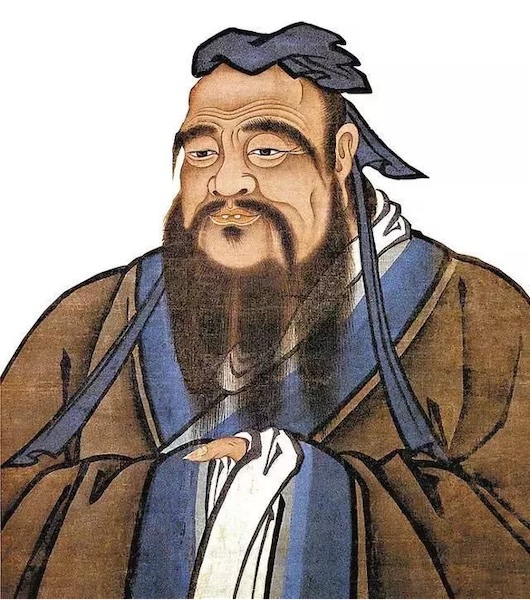
Under the strong promotion of Confucius, the color red became the representative of reverence in Confucian culture, so much so that it became the dominant color in many dynasties.
It was because of the strong promotion of the Zhou dynasty and Confucius that later emperors considered red to be very honourable. According to the five elements, even if the imperial color of the dynasty was not red, the emperor tended to establish connections with red.
For example, Liu Bang, the Gaozu of the Han Dynasty, was the self-proclaimed “son of the Red Emperor”, and Emperor Jing of the Han Dynasty made it compulsory for officials to use “red fenders” on their cars. In the early stages, Han emperors also wore “red dragon robes”. Thereupon, the famous painting, “Yingbi of Temple of Ancient Monarchs” came out.
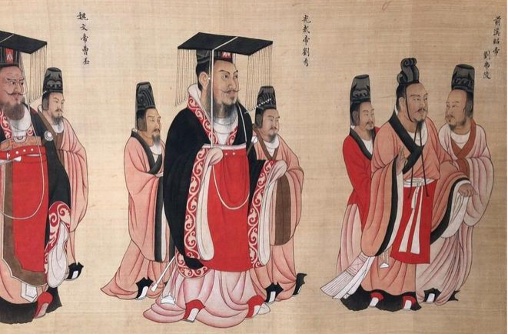
To the emperors, the color red delivered a strong visual impact to the audience, setting off the power and majesty of the emperor.
When it comes to the Tang dynasty, people’s worship towards red has been inherited.
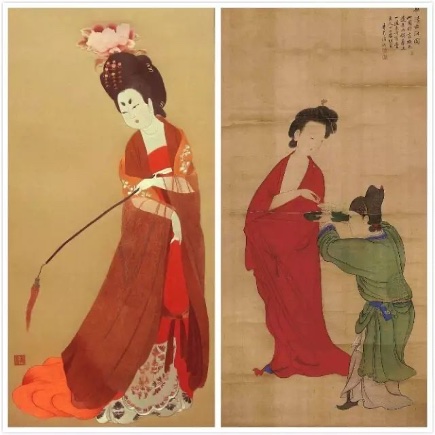
#4: In the Tang and Song Dynasties, Red was Used by Common Households
However, even though red boasted a very high status among different colors, in earlier dynasties, it was still only used by the imperial family. Common households were afraid of using the color of red.
Therefore, when did common households start using the color of red?
It started in the Tang and Song dynasties.
During the Tang and Song dynasties, ceramics flourished. Of all ceramics, top-quality pieces transmitted overseas were reddish-brown in color, as Kung-hong firing produced better ceramics.
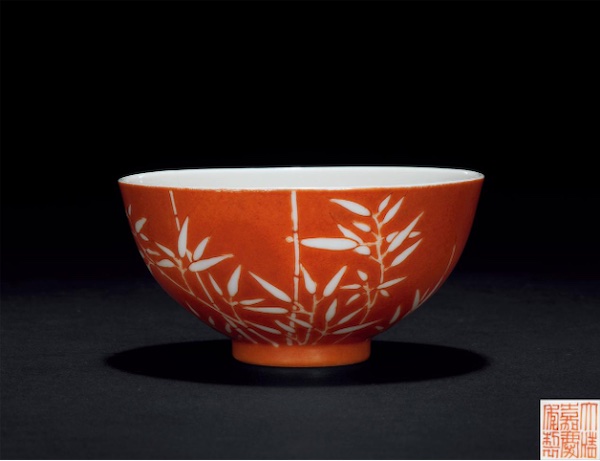
Foreigners called “Gong Hong” as Chinese red, meaning the special red color for China.
At this time, the color of red was not exclusive to emperors.
In the Ming dynasty, red became the dominant colour for all. The common people can also use the color of red at their will.
As the Ming emperor’s surname was Zhu (meaning “red” in English) and the country was founded on the virtue of fire, the use of red was promoted. In the early Ming dynasty, red was still exclusively reserved for the imperial palace and was not available for use by civilians.
In the late Ming Dynasty, due to the prevalence of money worship and changes in social values, ethics and morals, people began to lead an indulgent life. The red colour, which was originally reserved for the royal and official households, also entered the homes of ordinary people.
Gradually, red was used from the streets to the royal palaces and from officials to civil wedding costumes.
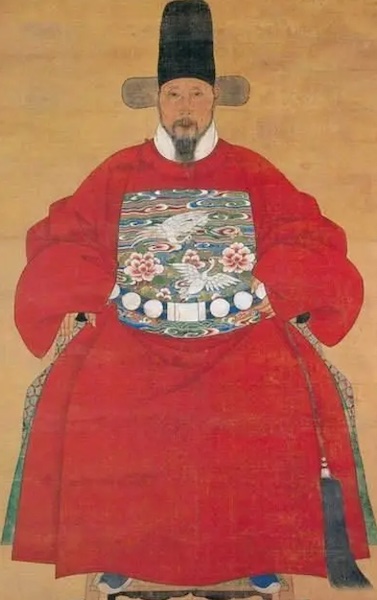
In addition, the red culture reached its peak in the Ming dynasty.
The most typical example can be the Forbidden City, where the emperor lived. The stately and atmospheric red palace and walls, the exquisite and elegant red galleries, and the dazzling red glazed tiles all used the color of red to show the supremacy and power of the ruler.
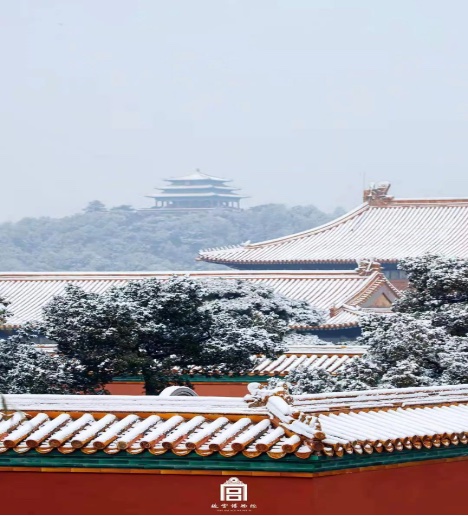
The Ming dynasty also stipulated that all memorials to the throne must be in red. Therefore, red evolved to be an exclusive color for imperial edicts, representing supreme authority. When it comes to the Qing dynasty, a similar system about the use of red has been passed on.
By the Qing dynasty, although there was no such a mad to promote the colour red, the reverence for it continued because of the high degree of Sinicization.
When the emperor got married, he wanted to paint everything inside the wedding room red, for example, the wedding room of the Guangxu Emperor, the Kunning Palace, was all in red.
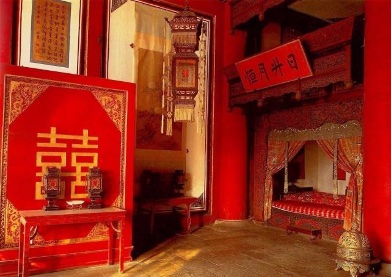
The Complete Atlas of Guangxu’s Wedding Ceremony was in dazzling red.
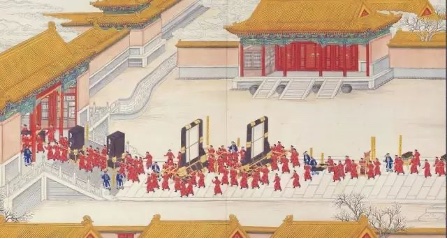
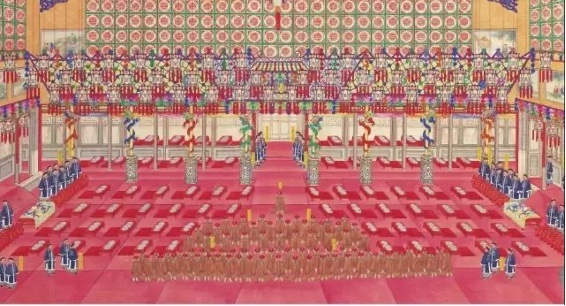
Hence, the color of red was worshipped by Zhou, Han, Sui, Tang, Song, Ming, and Qing dynasties. Coupled with its positive connotations of strength, wish, elegance, auspiciousness, flamboyance, festiveness, re has been deeply beloved by Chinese.
The rich connotations behind the color of red have permeated every aspect of the life of Chinese people, making it representative color of the Chinese nation.
Part Two: Which Kind of Red can be Deemed as “the Red of China”?
There are different kinds of red, such as the delicate grenadine, the deep date red, the flamboyant vermilion red, the rusty terracotta red, the rusty red and the bright cherry red.
Among all these types of red, at first, vermilion can mostly represent people’s understanding of the color of red.
Therefore, vermilion was called “the Chinese red”. Do you know why?
This is because:
China is a nation with a feudal history of several thousand years. In the feudal society, houses of the wealthy families were often decorated with grand colours such as deep red and purple to create a feeling of opulence and grandeur to show their social status.
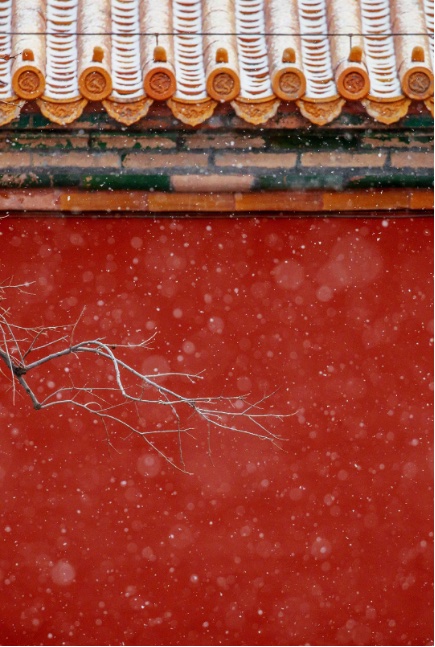
The vermilion, with its color spectrum between orange and red, is very colorful and noble.
In addition, as vermilion was often used as the paint for palace wall paint. Especially, since the Ming dynasty, all palace walls were painted in vermilion, and even the emperor’s imperial handwriting was also in vermilion, making it a symbol of wealth and prosperity.
In the contemporary age, the so-called “Chinese red” was initially referred to vermilion.
Vermilion was refined from cinnabar, while the purest form of vermilion comes from China. That is why it is called the “Chinese Red”.
However, currently, people tend to consider the “Chinese red” to be the bright red. Do you know why?
Actually, in modern times, whether it was the French Revolution or the Lyon Workers’ Revolt, there was bloodshed, so the color red represents a powerful force and hope for renewal.
In 1792, the Jacobins of the French Revolution interpreted the red flag as the banner of “liberty”.
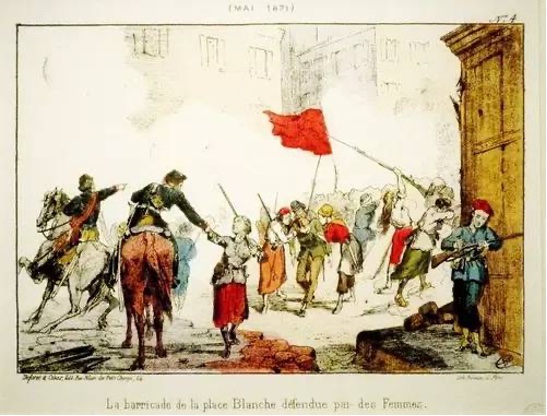
In 1834, Lyon Workers’ Revolt raised a red flag, and the Chinese Nationalist Party also adopted red as its flag color. In accordance with international practice, the Chinese Communists regard red as their color, symbolizing “revolution”, “victory” and “progress”.

Thereupon, different red flags were adopted, including the Chinese national flag, the flag of the Young Pioneers, the flag of the Communist Youth League and the flag of the People’s Liberation Army.
Besides, to warn and emphasize, people are increasingly using the bright red in their lives, such as bright-red banners, balloons, rubbish bins, and so on.
That accounts for why people worldwide associate the bright red with China. As time goes on, people deem the bright red and vermilion as “the Chinese red”.
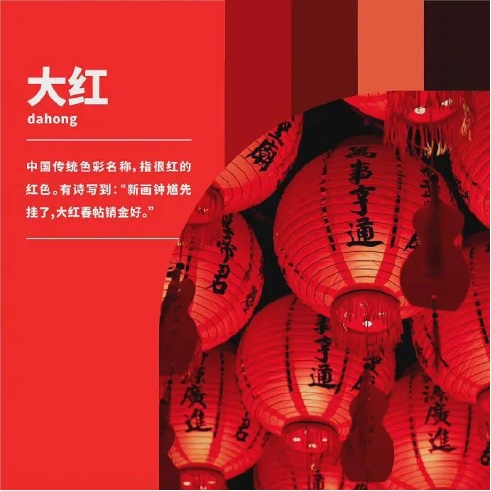
Whether it is vermilion or the bright red, deep in their heart, the Chinese people consider them to be a symbol of China.
Chinese red is vibrant and alive. Such a color bears the profound history and prosperous future of China.
As a carrier of culture, the color of red interprets the ancient and mysterious charm of the East.
Part Three: Why Do Chinese Avoid White
Now that we have mentioned why Chinese people love red, it is time to disucss why Chinese try to avoid white.
For many people today, white is a color of purity, class and elegance, and many people love white dresses, bags and skirts.
Nevertheless, that was not in the minds of the ancient Chinese. In ancient China, white was hated by the Chinese.
Compared with the high status of red, ancient Chinese considered white a taboo.
When autumn arrives, the temperature turns cold, everything is slaughtered and the earth takes on a depressed and solemn manner, especially in winter when it is accompanied by snow, making it even colder and more gloomy.
Accordingly, for most people, white delivers the sense of depression, desolation and even death, sorrow, bad omens.

Now, we will delve into reasons for people’s distaste for white.
#1: White Considered an Unlucky Color and Widely Used in Funerals
During the Warring States period, the Yin-Yang school of thought put forward “the Five Virtues of Finality”, matching the five colours of white, blue, black, red and yellow with five elements of gold, wood, water, fire and earth and the five directions of west, east, north, south and centre respectively.
White represents the West and White Tiger, one of the four sacred animals. The White Tiger is the god of war, killing and destruction, and it represents autumn, when injustice was often conquered and prisoners executed.
Thereupon, it has long imprinted in people’s mind that white delivered something bad.
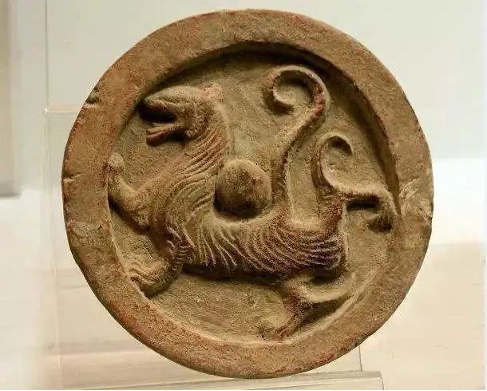
White is a sign of depletion and bloodlessness and lifelessness, symbolizing bad omens, so it is often associated with death and mourning. White matches the West, so Chinese people habitually compare “go die” to “go west” to convey the meaning of death.
In ancient times, white was the basic color of mourning and most of the mourning clothes were white.
As early as the Zhou Dynasty, white was prescribed for mourning and five garments were instituted. People’s clothes during funerals were classified according to their relationship with the deceased, from close to distant relationships, as chopping decay (cuī), qi (zī) decay (cuī), great merit, small merit, and fine linen (sī). All these clothes were in white.
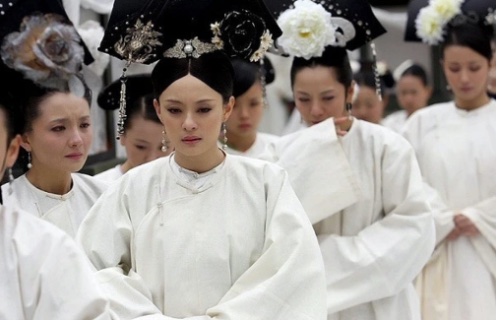
Although the “Five-type mourning clothes” are eliminated, today’s mourning clothes are mostly in white. So, white is deeply connected with death.
#2: White, the Color of the Common People and an Indicator of the Humble Social Status
In ancient China, dyeing techniques were far less developed than they are today, and it was expensive to wear clothes in different colors.
White is often the natural color of silk and linen, and most garments in this color were undyed at low cost, so they were cheaper and could be accepted by the general public.
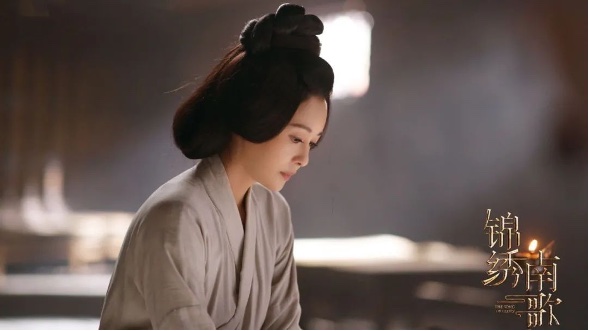
As time went on, people naturally thought that wearing white meant poverty and inferiority.
Currently, poor people are described as poor and “white” (blank). On the contrary, words like “Big Red Big Purple” (meaning in the limelight) are used to describe wealthy people with a promising future.
Furthermore, the imperial court prohibited the use white.
In ancient times, there was a clear hierarchy of colors for official uniforms, and they were not to be worn indiscriminately.
During the reign of Emperor Gaozong of the Tang Dynasty, the official uniform color system was formally formed, stipulating that purple was to be worn by officials with above the third rank, dark scarlet for the fourth rank, light scarlet for the fifth rank, dark green for the sixth rank, light green for the seventh rank, dark green for the eighth rank, and light green for the ninth rank. Consequently, civilians had to wear white clothes.
In some dynasties, it was even stipulated that common people could only wear white clothes. According to Sui Book etiquette, in the sixth year of the DaYe period, it was decreed that the officials should wear green clothes, the common people white, and the butchers black.
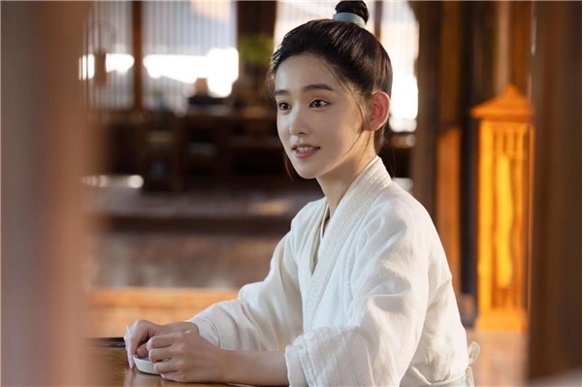
As such, the color of white became a mark of grassroots in ancient Chinese society. Illiterate persons (people in white) often referred to civilian people with low social status.
In The Romance of the Three Kingdoms, there was a story of “people in white crossing a river”, which tells how Lu Meng leads an army of 30,000 across the river to capture Jingzhou. In this story, “people in white” does not mean soldiers in white uniforms but common people.
Lu Meng transformed ships into merchant ships and had his soldiers dress up in civilian clothes in white to act as merchants and civilians, thus breaking through the layers of defence and taking over the whole of Jingzhou unnoticed.

On the one hand, white symbolizes desolation and death. On another hand, white represents the lowest social status of common people. That is why people avoid white.
Later, the color of white represents decadence, backwardness, and reactionary.
For instance, the ruling of Kuomintang was called the “White Terror”, the KMT-ruled areas the “White Areas”, and the KMT forces the “White Bandits”. Even in the Chinese national art of Peking Opera, an actor with a “white face” is said to be playing a treacherous, sinister role.
Meanwhile, white also delivers the meaning of failure and stupidness. Therefore, in China, white flag usually means to surrender.
All these reasons shape Chinese people’s impressions of white.
Of course, the taboo of white existed in the ancient time. With the more active interactions with the world, Chinese people’s attitudes to white now are affected by western goods and culture. That is to say, at present, Chinese people consider white a symbol of pureness and cleanness.
White is also found everywhere in different aspects such as people’s daily dressing and architectural aesthetics. The color of white is not a taboo for modern Chinese!
Summary:
From this article, you can find that Chinese people love red because of their worship towards the sun, fire, and blood. Moreover, people love red due to the promotion of the Zhou dynasty and Confucius. Such a craze for red in ancient time made it a highly popular color for both the imperial family and common households. Among all the types of red, vermilion and bright red are believed to be the “Chinese red”.
In terms of reasons for Chinese people’s hate for white. On the one hand, white is mostly used in mourning clothes, so it is considered ominous. On the other hand, white is used by common people, so it represents low social status.
Now, do you know why ancient Chinese people love red but avoid white?
